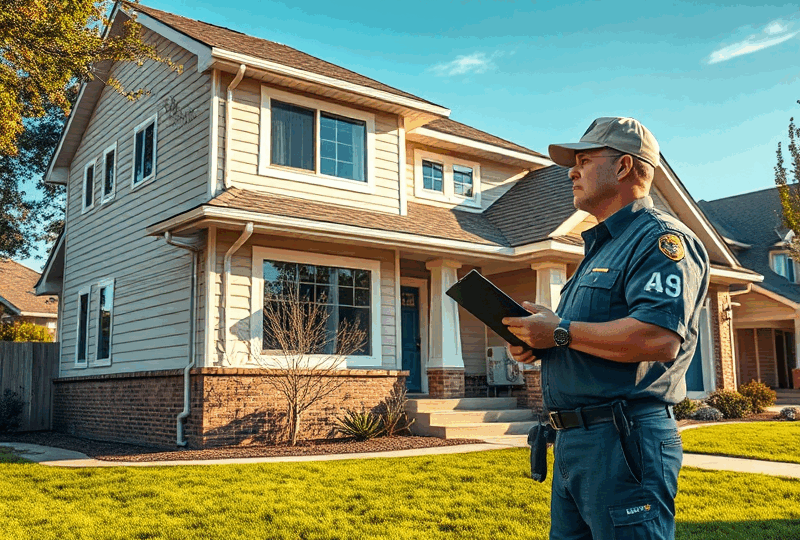
Home Inspections: What Every U.S. Homebuyer Needs to Know Before Closing

Buying a home is one of the most significant financial decisions you’ll ever make. Whether you’re a first-time buyer or a seasoned homeowner, understanding the importance of a home inspection before closing is crucial. A home inspection can uncover hidden issues, help you negotiate repairs, and ultimately protect your investment. In this guide, I’ll walk you through everything you need to know about home inspections in the U.S., from what they include to how to choose a qualified inspector.
What Is a Home Inspection?
A home inspection is a professional evaluation of a property’s condition, typically conducted after an offer has been accepted but before closing. It is usually performed by a licensed home inspector who examines the home’s major systems and components, including the roof, foundation, plumbing, electrical, HVAC, and more. The goal is to identify any existing or potential problems that could affect the safety, functionality, or value of the home.
According to the American Society of Home Inspectors (ASHI), a standard home inspection covers over 1,600 items in a home. While it is not a guarantee or warranty, it provides a snapshot of the home’s condition at the time of inspection.
Why Home Inspections Matter
A home inspection can save you thousands of dollars in unexpected repairs. It also gives you the opportunity to:
– Renegotiate the purchase price
– Request repairs or credits from the seller
– Walk away from the deal if serious issues are found (depending on your contract)
For example, discovering foundation cracks, outdated electrical wiring, or a failing roof could significantly impact your decision to proceed with the purchase.
What’s Included in a Standard Home Inspection?
A typical home inspection includes a visual assessment of the following areas:
– Roof and attic
– Foundation and basement
– Plumbing systems
– Electrical systems
– Heating and cooling systems (HVAC)
– Walls, ceilings, and floors
– Windows and doors
– Appliances (if included in the sale)
– Garage and exterior structures
Inspectors may also use tools like moisture meters, infrared cameras, and electrical testers to detect hidden issues.
What’s Not Included in a Standard Inspection?
It’s important to understand that a standard home inspection does not cover everything. Items typically excluded include:
– Swimming pools and spas
– Septic systems
– Wells and water quality
– Pest infestations
– Mold and asbestos testing
– Radon testing
If you’re concerned about any of these, you may need to hire a specialist for additional inspections.
How to Choose a Qualified Home Inspector
Not all home inspectors are created equal. Here are some tips to help you choose a reputable professional:
– Look for inspectors certified by ASHI (www.homeinspector.org) or InterNACHI (www.nachi.org)
– Ask for sample reports to see how detailed their inspections are
– Read online reviews and ask for references
– Confirm they carry errors and omissions (E&O) insurance
– Ensure they follow your state’s licensing requirements (not all states require licensing)
What to Expect on Inspection Day
Home inspections typically take 2 to 4 hours, depending on the size and condition of the home. It’s highly recommended that you attend the inspection so you can:
– Ask questions in real-time
– See issues firsthand
– Gain a better understanding of your future home
After the inspection, you’ll receive a detailed report outlining the findings, often with photos and recommendations.
How to Use the Inspection Report
Once you receive the report, review it carefully with your real estate agent. You may decide to:
– Request repairs or a price reduction
– Ask for a credit at closing
– Proceed as-is if the issues are minor
– Walk away if the problems are too significant
Keep in mind that sellers are not obligated to fix everything. Focus on major issues that affect safety, structural integrity, or costly repairs.
Cost of a Home Inspection
As of recent data, the average cost of a home inspection in the U.S. ranges from $300 to $500, depending on the location, size, and age of the home. While this may seem like an added expense, it’s a small price to pay for peace of mind and potential savings.
Specialized Inspections to Consider
Depending on the home’s age, location, and condition, you may want to consider additional inspections such as:
– Radon testing (especially in the Midwest and Northeast)
– Termite or pest inspection
– Mold inspection
– Sewer scope inspection
– Chimney inspection
These can provide a more comprehensive view of the property’s condition.
Final Thoughts
A home inspection is a vital step in the homebuying process. It helps you make an informed decision, avoid costly surprises, and negotiate better terms. By understanding what’s involved and working with a qualified inspector, you can move forward with confidence toward closing day.
Disclaimer
This article is for informational purposes only and does not constitute legal, financial, or real estate advice. Always consult with a licensed professional in your area before making any real estate decisions. The author and publisher are not liable for any actions taken based on the information provided herein.








답글 남기기